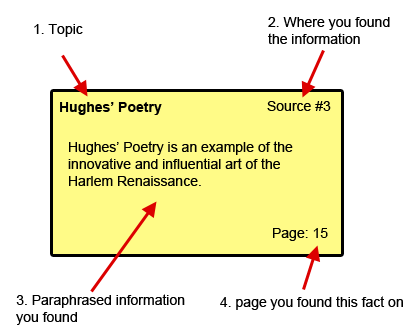Note Taking for a Research Project and Organizing Information
Why Should I Care?
Scribbling notes like a madman? Losing your mind with an endless document of copy-pasted information? Going over paragraphs and wondering where you got the information? Can't locate the author of a text?
There is a better way. There are techniques you can use to keep better track of your research process and save time writing papers.
This lesson has 3 parts
- Rough Draft
- Cue Cards
- Content Matrix
What is Note Taking for a Research Project and Organizing Information?
Your research project is coming along. You have lots of information. You've been reading, scrolling, and maybe even taking pictures of book pages with your phone. When you get to writing the paper, you are a mess? Everything is all over the place? Let's get you organized with some pro-tips.
Here are three techniques you can use to take better notes of your material, and save time sorting that out, so that you can plan for a better paper. In each case, it is important for you to list all of the bibliographical information that is associated to each of your sources, such as:
-
Rough Draft
This technique is relatively simple. The researcher will 'dump' all of the information they find into one single document. This document would make no sense to anyone else. This document should never be shown to the reader of the final paper.
If you proceed with this technique, make sure to code everything in a way that you can track it later. For example, make sure each document is listed including all the bibliographical information. Make sure that each piece of information is associated to its rightful source. Weblinks are not enough. You will need all of the author/publisher information later to do the bibliography, so take them down now.
Be vary careful not to confuse your thoughts, your writing, with the information and quotes from other sources. Many plagiarists have done so by accident, because their notes were muddled.
This technique is especially useful if the researcher is using a laptop, which they can carry to the library while consulting books and journals.
For those who like to use color codes, highlighting, and other formats, you might appreciate the Vizualizing Method. Follow the link below for more information on this. https://sheridancollege.libguides.com/takingnotesmodule/taking-notes-for-written-assignments/visualizing-method
-
Cue Cards
This technique is the "OG" of academic research. University students were using this technique throughout the 20th century and some still use it because of its elegance and simplicity.
The researcher purchases a box of cue cards, cardboard rectangles of roughly 3 X 5 inches. A card is used to write the bibliographical information of each document consulted. Another card is used for each piece of information, or quote, that is worthy of being used in the paper. Keywords, such as the author's last name, or a topic, are written in the top-right corner of the cards.
Source: Gallaudet University, https://gallaudet.edu/student-success/tutorial-center/english-center/writing/pre-writing-writing-and-revising/the-note-card-system/
The beauty of this technique is that the cards can be written in the order that the documents were consulted. However, the cards can then be sorted in the order that the information should best be presented. Once the cards are sorted, the researcher proceeds to write the paper, easily citing each source as they go along. The cards are easy to carry and can also be used as page markers during the reading phase.
More information on Cue Card technique: https://sheridancollege.libguides.com/takingnotesmodule/taking-notes-for-written-assignments/cue-card-method.
-
Content Matrix
A more modern version of the cue cards technique, the Content Matrix, is a table that you can build in Word, Excel, or Google Documents.
As you read your documents, include ideas and citations in the table as shown below. Add a line for each new element of information. A single book could provide a dozen lines in your table. The trick is to have a small number of topic keywords, and to identify one for each line of content.
Once your research is finished, the table will be organized in the order that you entered the information. It will be in the order of the books and articles that you read. Now is the time to re-organize the ideas so that the information is presented in the order of the topics, and not the authors.
To prepare for this, make a short plan of the paper, using the topic keywords. Then, copy-paste the lines into the order you prefer, as to follow the plan.
You know have all of the information for the paper, with the author names and publication dates, associated to each bit of information. You can now copy-paste the table as 'text only', and the basic foundation of the paper is done. You can now focus on writing and reformulating the information into coherent paragraphs.
Content Matrix
|
Source |
Page |
Topic |
Idea / Finding
|
Quote or Paraphrase |
|
Smith, 1776 |
334 |
Theory |
The wealth of nations grows with division of labour, because productivity increases when tasks are split up. Specialization of labour also brings gains from trade. |
“(…) led by an invisible hand to promote an end which was no part of his intention” |
|
Smith, 1776 |
... |
... |
... |
... |
Save time: Do not retype everything into your actual research paper. Copy the matrix, and paste to a new doc as “text only”. The grid will disappear. Reformulate into paragraphs.


No Comments